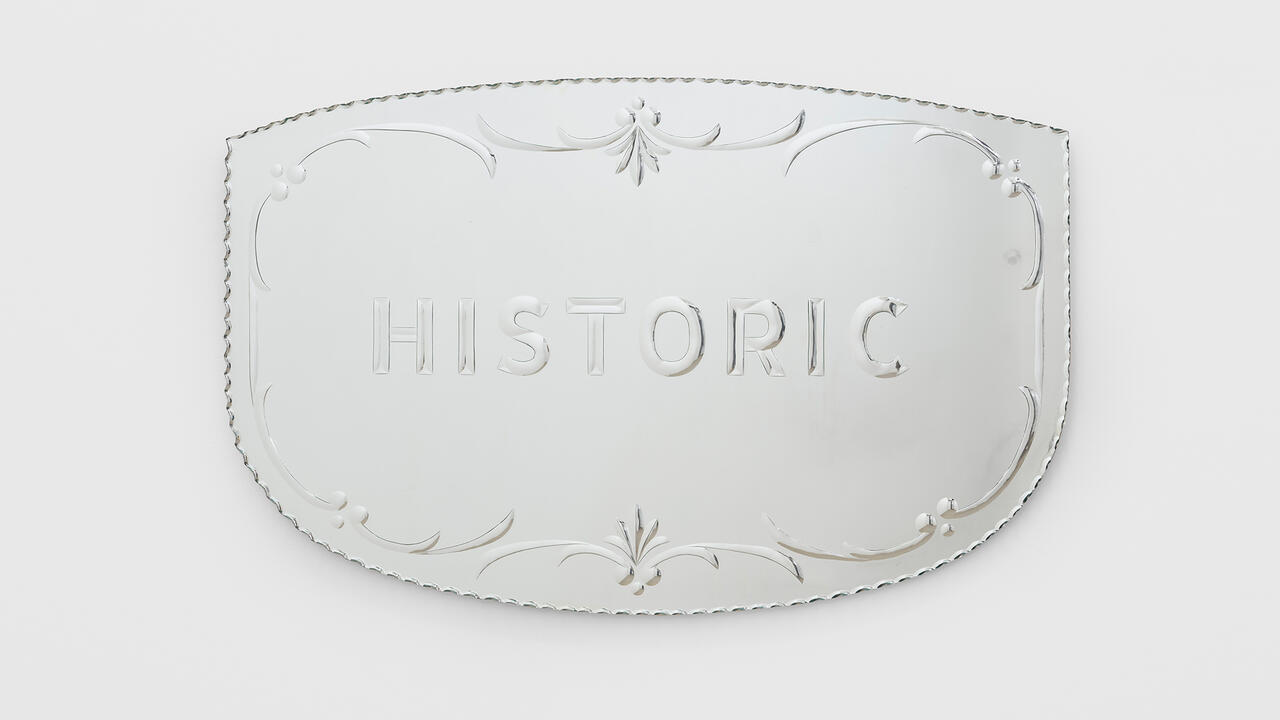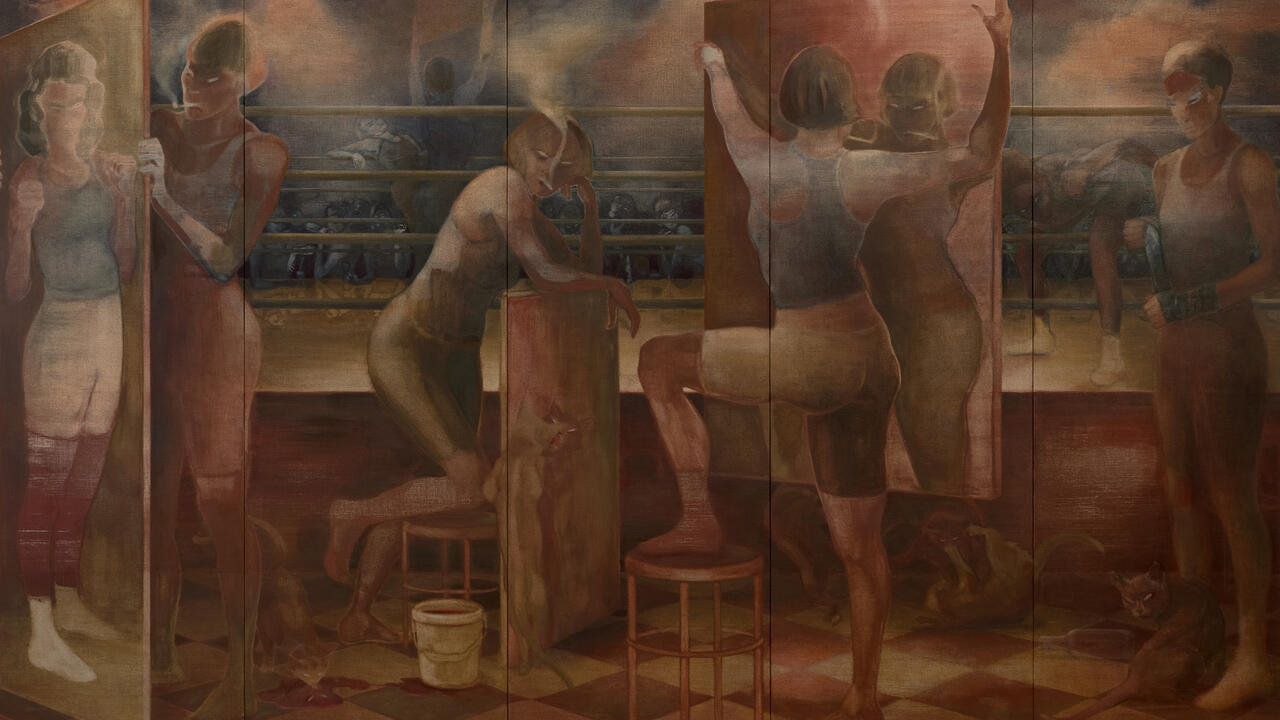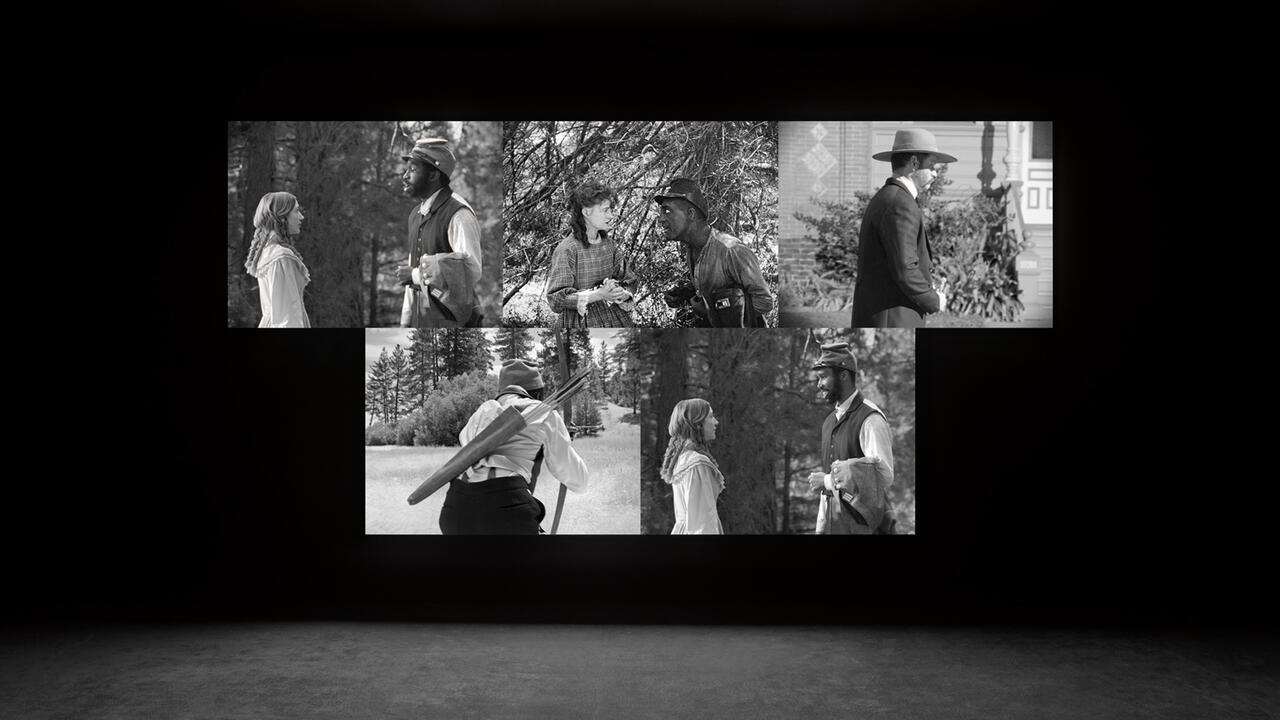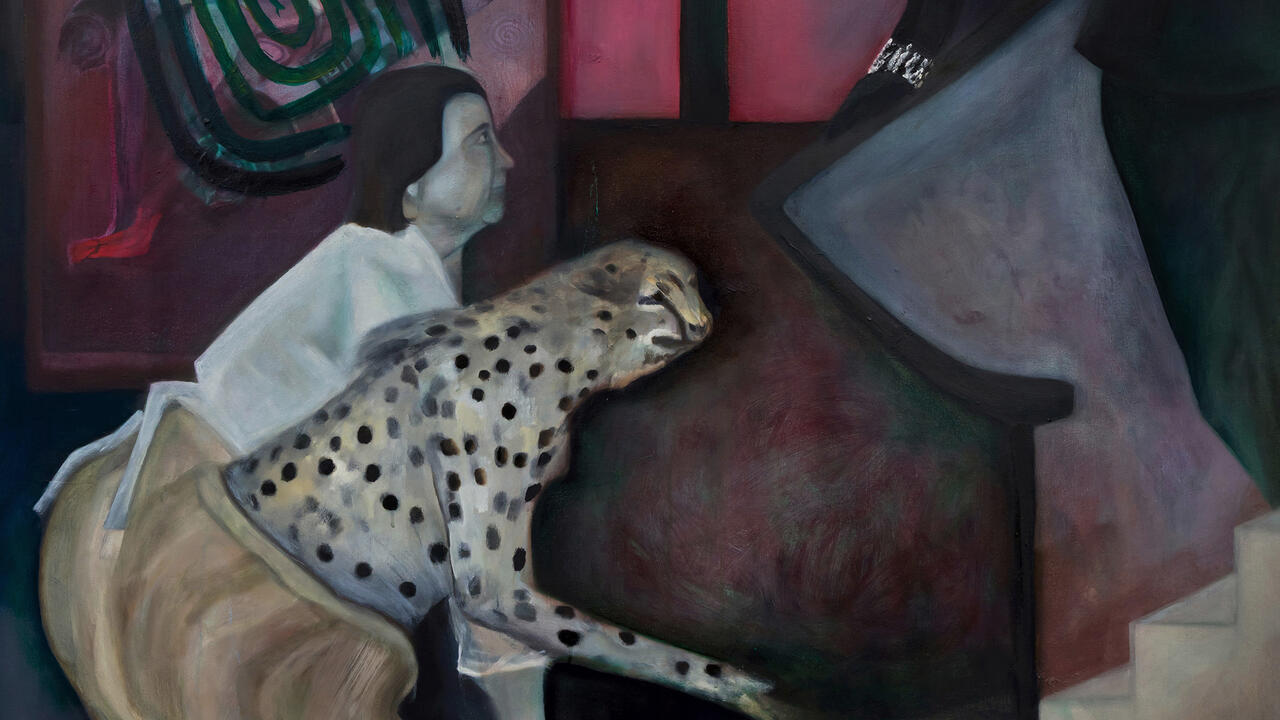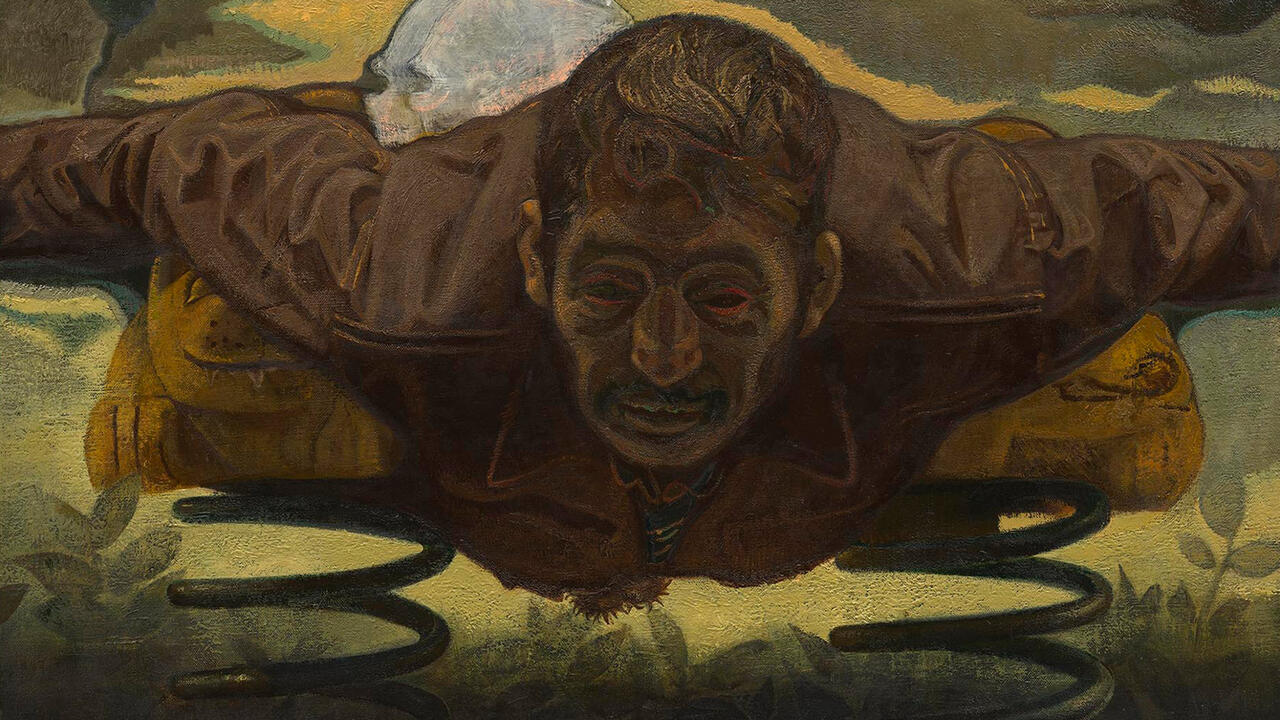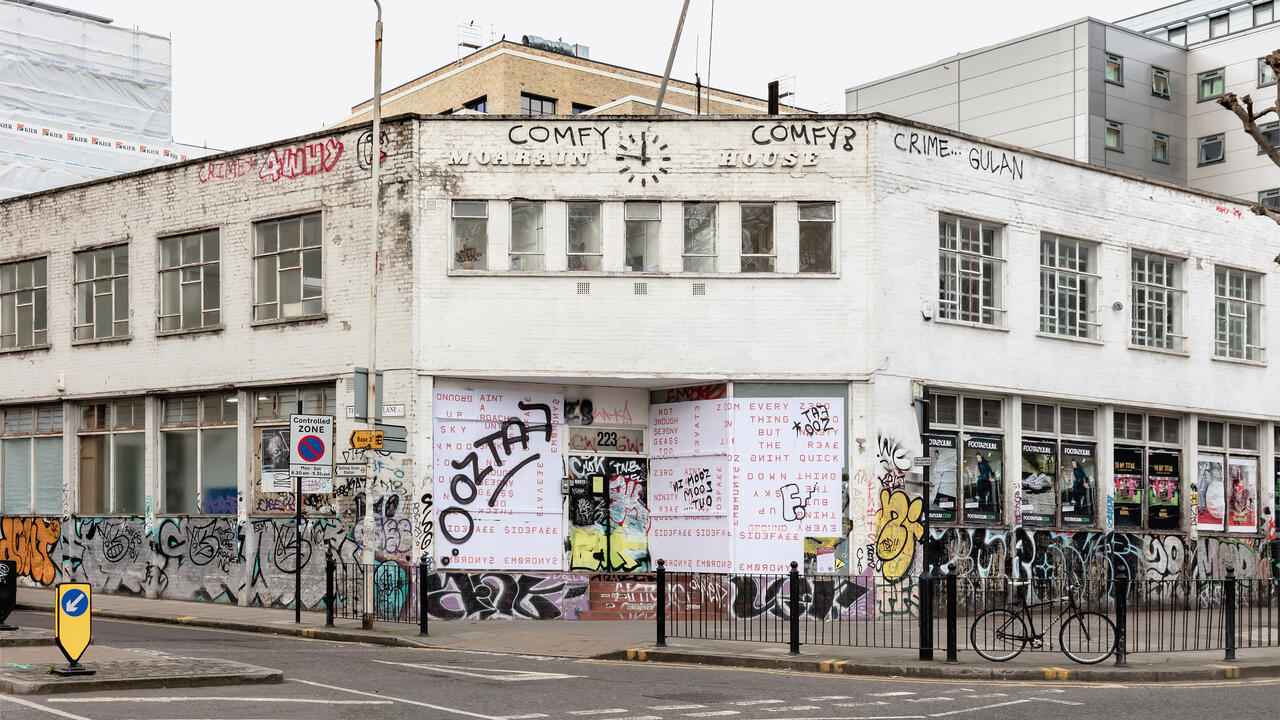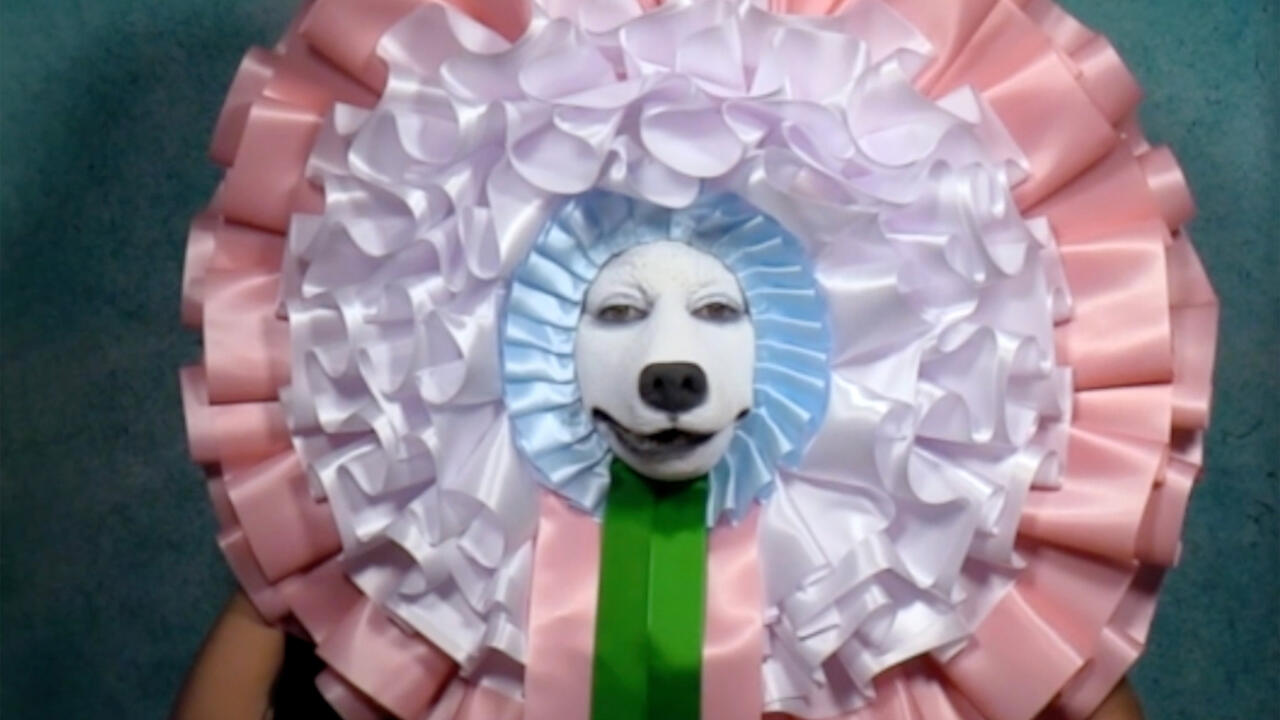Public Property
The fate of postwar murals in the UK
The fate of postwar murals in the UK
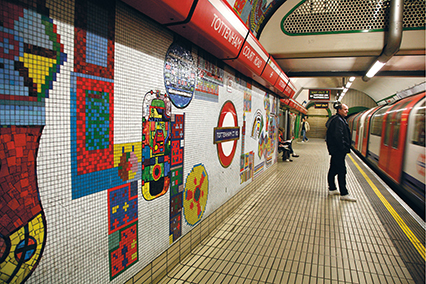
‘Hello! Is someone there? I shall report this!’ In a frenetic scene in John Landis’s comic-horror film An American Werewolf in London (1981), the pinstriped young Gerald Bringsley is stranded on a vacant platform of Tottenham Court Road underground station when eldritch growls start up along the tracks. Some thing is there alright and, from a hellhound’s-eye view, Landis’s camera pursues its panicked victim through the underground’s tiled passages to a slavering denouement. Aged decor flits by, postwar chocolate machines and tessellated news posters, until Bringsley hops a barrier, drops his umbrella and sprawls on the escalator, doomed. By the time of An American Werewolf in London’s release, London Underground had become a favoured horror-movie shorthand – see also Quatermass and the Pit (1967) and Death Line (1972) – for creepy decrepit infrastructure, and it is hard not to see this sequence as an allegory for the revenge of failed public amenities against the smugly furled ambassadors of the new Thatcherite dispensation.
Still, some remnant of the Underground’s modernity, and especially London Transport’s decades-long commitment to public art and popular modernism, survived. In 1979, the year of Margaret Thatcher’s first election victory, a member of the Tube’s team saw a mural the Scottish pop artist Eduardo Paolozzi had made for a residential building in West Berlin, and recommended he be asked to redecorate Tottenham Court Road station. Paolozzi responded with a series of mosaics that covered platform walls, access corridors and a former lift shaft that linked the Central and Northern lines to the ticket office above. He drew on motifs familiar from his earlier work: vast, colourful cogwheels, butterflies, slabs of abstract electronics, voodoo masks and heroic comic-book figures. He also included other reminders of life above ground: saxophones and cameras, fast food, and artefacts from the British Museum. Paolozzi had originally intended his murals to cover the tunnel walls opposite the platforms and, although London Transport decided it could not lose that captive source of advertising revenue, his work remained, from the time it was unveiled in 1984, blessedly ad-free.
The combination of public art and vexed public ownership – London Transport became London Regional Transport then, in turn, Transport for London (TfL) – perhaps explains the widespread and belated fury that greeted news, at the start of 2015, that Paolozzi’s murals were to be torn out and – what, exactly? Nobody seemed quite sure, even as they signed an online petition in protest, which eventually elicited over 8,000 names. What was certain was that Tottenham Court Road station was being redeveloped as part of the completion of Crossrail, a new east-west railway line that is due to open in 2018. TfL assured the public that Paolozzi’s work would mostly be reinstated but, at the end of January, it emerged that the mosaics above the main escalators had been removed, and their fate was unclear. As for the remainder, the Twentieth Century Society, which has done much in recent decades to publicize the plight of Britain’s modern architecture and design, welcomed the fact that a single mural above the Oxford Street entrance was to be preserved in situ, but deplored TfL’s opacity regarding the future of mosaics on platforms and in corridors, where it seems much of the original tiling is to be replaced. At the time of writing (mid-March), TfL’s latest statement declares: ‘Top Tiles Saved at Tottenham Court Road’, then insinuates weasel words like ‘iconic’ and ‘much-loved’ – so often code for we shall do with it what we like.
There are more than 1,000 public murals from the postwar decades still intact in Britain: relics of modernism and social democracy whose future in many cases remains uncertain. The alarming case of Paolozzi’s murals at Tottenham Court Road station now stands for the past few decades’ assault on postwar modernism in Britain, and also for the fact that protest typically arrives too late. Even if, as TfL now also claims, 95 percent of Paolozzi’s work will be reinstated in some fashion, it is not unreasonable to ask that the removal of a vast work of public art, in a context of at least notional public ownership – a work seen by 150,000 Tube passengers every day – be carried out with a degree of what Bringsley’s descendants among bureaucrats and business-folk like to call ‘transparency’. We, the monstrous public, ought to report you.









